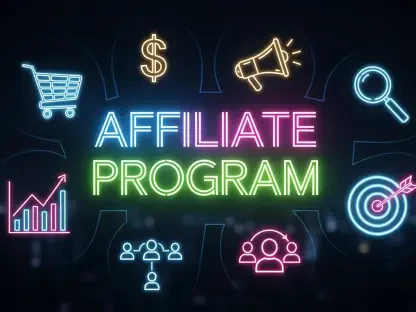Overview of the Search API and SEO Industry
The search API and SEO industry stands as a cornerstone of digital marketing, driving online visibility for businesses across the globe. Search APIs enable automated access to vast amounts of search engine data, empowering companies to track rankings, analyze competitors, and optimize content strategies. This ecosystem is vital for marketers aiming to stay ahead in an increasingly competitive digital landscape, where a single ranking shift can alter traffic and revenue overnight.
Key players such as SerpApi, Semrush, and SISTRIX have become indispensable by providing tools that translate raw search data into actionable insights. These platforms cater to a wide range of users, from small businesses to multinational corporations, all relying on precise keyword research and market analysis. The ability to retrieve bulk search results efficiently underpins campaign planning and performance monitoring, making search APIs a lifeline for data-driven decision-making.
Technologically, search APIs integrate seamlessly into marketing workflows, forming the backbone of automation tools used for competitor benchmarking and trend analysis. However, the industry is at a pivotal moment, with growing dependence on such tools coinciding with rapid changes in data access policies by major search engines. Current trends point to an increased push for automation in data retrieval, yet this reliance faces challenges as providers tighten control over their ecosystems, setting the stage for significant disruptions.
Impact of Google’s Search API Restrictions
Key Changes and Technical Limitations
Google’s recent policy shifts have sent shockwaves through the SEO community, particularly with the removal of the num=100 parameter on September 14. This change eliminated the ability to fetch 100 search results in a single API call, forcing users to make multiple requests to gather equivalent data. Just two weeks later, on September 28, SerpApi’s Google Light Fast API—a workaround designed for efficiency—was restricted to returning only three organic results, severely limiting its utility.
These technical constraints have profound operational consequences for SEO platforms and their clients. Making multiple API calls not only increases latency, slowing down data processing, but also significantly inflates costs as each request adds to the expense. For businesses dependent on real-time insights, this creates inefficiencies that can hinder timely strategic adjustments.
Moreover, Google’s active enforcement against workaround solutions underscores a persistent tension with third-party providers. SerpApi’s attempt to bypass initial restrictions was quickly identified and blocked, highlighting a “cat-and-mouse” dynamic where temporary fixes are met with swift countermeasures. This ongoing struggle raises questions about the sustainability of relying on such APIs under tightening restrictions.
Industry Metrics and Projected Fallout
The scale of disruption is evident in user feedback, with reports indicating hundreds of thousands of affected API calls daily for some SerpApi clients. Cost increases of up to tenfold have been noted by major platforms like Semrush, which now face the burden of executing multiple requests to maintain service levels. SISTRIX, another key player, has responded by discontinuing certain data updates, such as desktop SERP tracking, to manage expenses.
Performance indicators across the industry reflect a broader strain, with smaller SEO providers struggling to absorb these financial hits. Marketing teams, already operating on tight budgets, may need to reallocate resources or reduce reliance on comprehensive data tools, potentially compromising campaign effectiveness. The economic ripple effect could disproportionately impact niche players unable to scale operations like their larger counterparts.
Looking ahead, projections suggest a reshaping of budget priorities, with marketing departments possibly shifting funds toward alternative data sources or scaled-back subscriptions. The financial viability of smaller SEO providers hangs in the balance, as sustained cost increases could push some out of the market. This scenario points to a potential consolidation where only well-funded entities thrive under the new cost structure.
Challenges Facing SerpApi and the SEO Ecosystem
The immediate fallout for SerpApi includes operational hurdles that have overwhelmed customer support teams fielding complaints about restricted data access. The instability of workaround solutions, as seen with the short-lived Google Light Fast API, adds to the uncertainty, leaving clients scrambling for reliable alternatives. This situation strains trust and tests the company’s ability to adapt swiftly to an evolving landscape.
Beyond SerpApi, the broader SEO ecosystem grapples with reduced data access during critical periods of search volatility, such as after major algorithmic updates from Google. These times demand robust monitoring to distinguish between organic performance issues and external ranking factors, yet limited results hinder such analysis. The gap in actionable data could lead to misinformed strategies, affecting long-term outcomes for businesses.
Mitigation strategies are under exploration, with some platforms considering alternative data sources like social media signals or secondary search engines. Others may adapt service models, offering tiered plans to offset rising costs, though this risks alienating smaller clients. A looming threat is market consolidation, where larger platforms with deeper pockets could dominate, sidelining smaller providers unable to keep pace with escalating operational demands.
Regulatory and Policy Landscape of Data Access
Google’s data access policies have come under scrutiny as third-party API providers like SerpApi face unprecedented barriers. The absence of official alternatives offering comprehensive competitor visibility leaves SEO tools in a precarious position, reliant on scraping methods that often violate terms of service. This creates a compliance dilemma, balancing the need for data with adherence to restrictive guidelines.
A wider tech industry trend of tightening control over data usage exacerbates the issue, with anti-scraping measures and infrastructure protection becoming standard. Major platforms are increasingly prioritizing their ecosystems, limiting external access to safeguard proprietary information. For SEO tools, navigating this environment means constant adaptation to policies that can shift without warning, disrupting long-term planning.
Sudden policy changes, often implemented without prior notice, amplify the challenge, leaving providers and users blindsided. Industry advocacy for more accessible data channels has gained traction as a potential solution, though progress remains slow. Until clearer guidelines or alternatives emerge, the tension between data needs and regulatory constraints will continue to shape the operational realities of SEO platforms.
Future Outlook for Search APIs and SEO Tools
In light of Google’s restrictions, the search API industry may pivot toward innovative technologies or alternative search engines to fill data gaps. Exploring less dominant platforms for competitive insights could diversify reliance on a single source, though depth and accuracy remain concerns. Developing proprietary scraping methods, despite risks, might also gain traction as a stopgap measure.
Emerging trends like AI-driven search summaries are reshaping traditional search monitoring, with platforms like ChatGPT influencing how information is accessed and cited. This shift could narrow the diversity of referenced content, benefiting top-ranking domains while marginalizing others. Consumer behavior may follow suit, prioritizing highly visible sources and altering citation patterns in digital ecosystems.
Several factors will shape the industry’s trajectory, including economic pressures that could spur market shifts and global tech regulations aiming to balance data access with platform control. Innovation in workaround solutions remains a wildcard, potentially offering short-term relief but facing inevitable pushback. As these elements converge, the adaptability of SEO tools and marketers will determine their resilience in a constrained data landscape.
Conclusion and Strategic Recommendations
Reflecting on the extensive challenges that unfolded due to Google’s search API limitations, it becomes clear that SerpApi and the broader SEO industry face significant technical disruptions and economic pressures. The restrictions not only altered operational workflows but also exposed vulnerabilities in data dependency that have long underpinned digital marketing strategies.
Moving forward, stakeholders need to prioritize actionable steps to navigate this transformed landscape. Exploring alternative platforms and data sources emerges as a critical approach to reduce reliance on a single ecosystem, while advocacy for policy changes offers a pathway to negotiate better access terms. Investment in adaptive technologies, such as AI-driven analytics, also holds promise for offsetting some limitations.
Ultimately, the industry’s resilience shines through in its capacity to innovate under pressure, pointing to potential growth areas despite ongoing uncertainties. By diversifying strategies and fostering collaboration, businesses and SEO providers can chart a sustainable course, ensuring that data access challenges become a catalyst for transformation rather than a barrier to progress.









